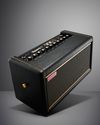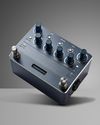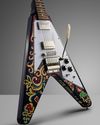
Defined as the distinct repetition of sound, dedicated delay effects were first seen in recording studios in the 1950s in the shape of cumbersome tape-echo units that used reels of magnetic tape (just like an old audio cassette) to record and playback sound. Solid-state technology brought delay to a more practical stompbox format in the 1970s. And, although many of the most common delays these days are digital, many replicate the natural warmth and grain of much-loved early tape echoes and analogue pedals.
Here, we're looking at five ways to use the effect, from epic atmospherics and post-rock ambience to synth-like swells and timed rhythmic parts. On the subject of timed delays, you'll need solid rhythm skills, of course, but also an understanding of how delay time (usually expressed in milliseconds) relates to musical tempo (expressed as beats per minute). Read on, as we cover what you need to know.
DELAY ESSENTIALS
Don't delay! Cover some basics with our brief jargon buster
This story is from the {{IssueName}} edition of {{MagazineName}}.
Start your 7-day Magzter GOLD free trial to access thousands of curated premium stories, and 9,000+ magazines and newspapers.
Already a subscriber ? Sign In
This story is from the {{IssueName}} edition of {{MagazineName}}.
Start your 7-day Magzter GOLD free trial to access thousands of curated premium stories, and 9,000+ magazines and newspapers.
Already a subscriber? Sign In

POSITIVE GRID SPARK 2
The sequel to the world's most popular smart guitar amp is here

JACKSON PRO PLUS XT SOLOIST SLAT HT6 BARITONE
We get low with this fast-playing, all-black modern metal machine

GUILD POLARA DELUXE
A’70s staple gets a bit of are-jig, o4 years after it was introduced

NEURAL DSP NANO CORTEX
Neural DSP's second pedal might be the ultimate compact all-in-one rig

EPIPHONE JIMI HENDRIX LOVE DROPS FLYING V
Prepare to kiss the sky with Epiphone's latest 'Inspired By...' model

JIMMY PAGE
\"I was using what was really meaty!\"

EDDIE VAN HALEN
“You either capture the vibe or you don't!”

MYTH BUSTERS: THE CABLE DESTRUCTION TEST
Need to know whether gear is worth your cash? Who you gonna call...

JOHN FRUSCIANTE'S LETTER FROM AMERICA
Our July 2006 issue featured none other than John Frusciante of the Red Hot Chili Peppers on the cover, with a line of text promising discussion of meditation, drugs, Hendrix and some chat about the band’s then-latest album, Stadium Arcadium.

CHALLENGE CHARLIE
Ata time when TC's staff were getting, frankly, rather silly, one man stood up to take on the daftest of all our challenges...